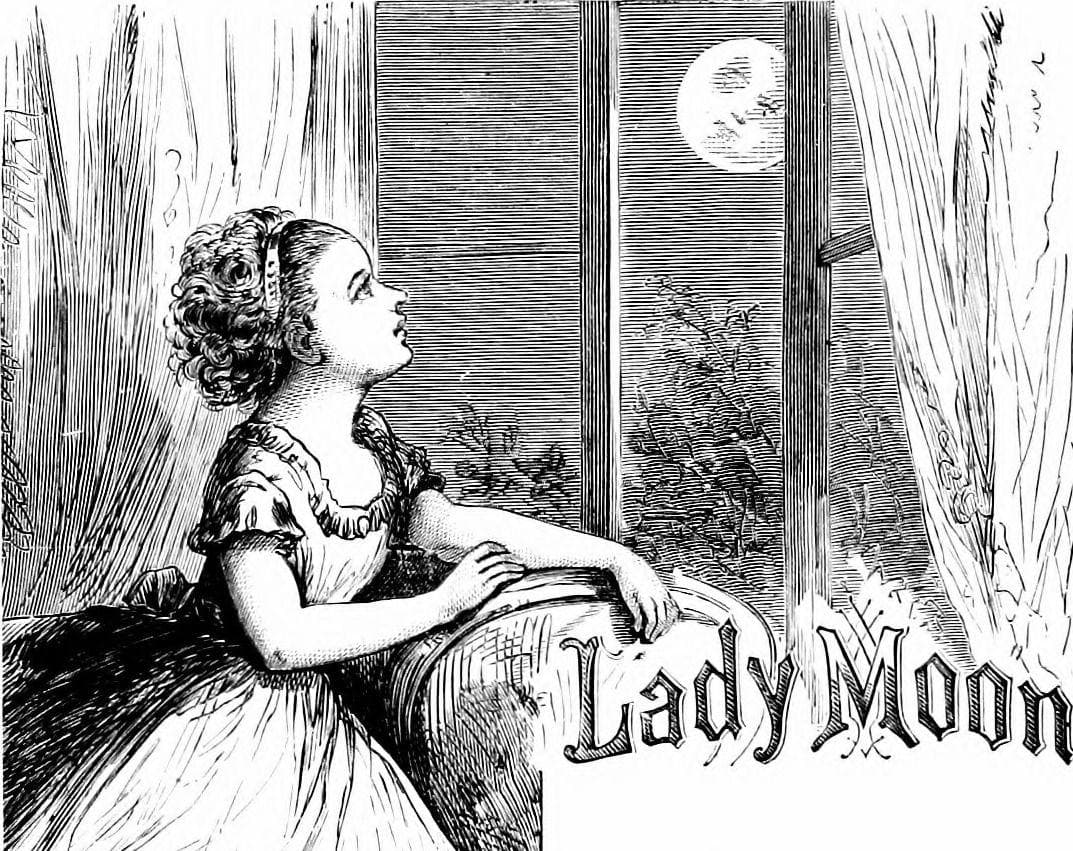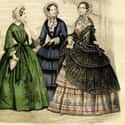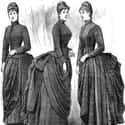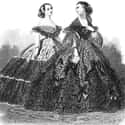-
(#7) Panniers
Panniers (from the French word "panier," meaning "basket") were popular in the 17th and 18th centuries. The boxed petticoat expanded the width of skirts and dresses, and stood out on either side of the waistline. Panniers varied in size and were made of whalebone, wood, metal, and sometimes reeds. Extremely large panniers were worn mostly on special occasions and reflected the wearer’s social status. Servants wore smaller hoops. Two noblewomen, however, couldn’t walk through an entrance at the same time or sit on a couch together. The device was also uncomfortable, limiting movement and activity.
The expansive pannier sparked ridicule. A satirical article in The Gentleman’s Magazine, written in 1750, portrayed women as being sick of the burden of the style. "We pass along, as it were, balancing between two scales. Every person we meet, every post we pass, and every corner we turn, incumber [sic] our way, and obstruct our progress. We fit in a chair hid up to our very ears on either side, like a swan with her head between her lifted wings. The whole side of a coach is hardly capacious enough for one of us," a passage read.
-
(#2) Arsenic Dresses
Bottle-green dresses were all the rage in the Victorian era, and they had price tags to match. To achieve this lovely shade of green, the fabric was dyed using large amounts of arsenic. Some women suffered nausea, impaired vision, and skin reactions to the dye. But the dresses were only worn on special occasions, limiting exposure to the arsenic in the fabric.
The garment makers were the real sufferers - many died to bring this trend to the fashionable set.
-
(#1) Lotus Shoes
Lotus shoes were worn by Chinese girls with bound feet. For centuries, families repeatedly broke and folded the feet of their young daughters to create the tiny feet that epitomized femininity. The foot was bound with long ribbons to prevent growth. If the toes withered and fell off, even better. The process usually took between two to three years, and the girl’s feet were bound for the rest of her life.
Women with bound feet wore Lotus shoes, cone or sheath-shaped footwear that resembled a lotus bud. The shoes were made of silk or cotton and were usually ornate, embroidered with flowers, animals, and other traditional patterns.
There were many attempts to ban foot binding throughout history. It was officially outlawed in 1912, though the practice was still carried out in secret in some areas of China for years after.
-
(#14) Bustles
Also known as the "Grecian bend," the Victorian bustle arrived on the scene in the 1870s. The earliest version of this trend simply featured excess fabric gathered and draped at the back of a dress. Eventually, though, skirts were puffed up with large cushions filled with straw. Ladies who wore them ended up with exaggerated figures with outthrust hindquarters.
The bustle was frequently a target of ridicule. In 1868, Laura Redden Searing - using the pen name Howard Glyndon - wrote about the agony young women put themselves through for fashion in the New York Times, "If you knew the Spartan courage which is required to go through an ordeal of this sort for two or three hours at a time, you would not wonder that she has not an idea left in her head after her daily display is over," she said.
-
(#9) Crinolines
The crinoline, also known as the hoop skirt, was a bell-shaped device that pushed the volume of skirts to an extreme degree. Worn in the 1800s by Victorian women, crinolines were originally petticoats made of linen stiffened with horsehair. Later, the invention of the steel cage crinoline offered the same voluminous look without the extra heat and bulk of thick petticoats.
These undergarments were unwieldy, but they were also dangerous. In 1858, a young woman in Boston died when her large skirt caught embers from a fireplace in her parlor and went up in flames. Nineteen such deaths occurred in a two-month period.
-
(#15) Bloomer Suits
Newspaper editor and temperance advocate Amelia Bloom helped start a of wave of more practical, less constricting clothing in the 1850s. Her temperance newspaper, The Lily, became the place where she and writer and activist Elizabeth Smith Miller promoted the "Bloomer suit." Consisting of trousers under a knee-length skirt with a vest, the Bloomer suit caught on with temperance activists and other like-minded women, causing a major sensation.
Women who wore Bloomer suits were frequently harassed, as the outfit was deemed scandalous. Many in the press and society lamented that the Bloomer suit robbed a woman of her mystery by revealing too much. The Bloomer suit was eventually ridiculed back into the closet, but not before making a mark on fashion.
New Random Displays Display All By Ranking
About This Tool
Even the most fashionable people cannot withstand the impact of some of the stupidest fashion trends in history. Some fashion trends are not only so silly but dumb, some of these trends have even become a symbol of the culture of the times. From the Lotus Shoes in feudal China to the Arsenic Dresses popular in ancient Europe, these dumbest fashion trends are so absurd by today's standards that we can't help laughing and wondering what people were thinking at the time.
We can clearly know that fashion trends are closely related to society and culture. The random tool shows 17 pictures of the dumbest fashion trends in world history that you will be interested in.
Our data comes from Ranker, If you want to participate in the ranking of items displayed on this page, please click here.
















